The experimental animation film “Quest of the Midas” is uniquely composed entirely of images of banknotes. But how does this look in practice? This post follows the construction of one of the film’s frames as featured in its press material.
One scene depicts a leopard attack. The predator attacks a caravan in the jungle. What steps are taken to compile the image’s composite? We must search for banknotes featuring relevant elements for the scene, then place them in the appropriate context on the image.
A general jungle / forest background is not too complicated to find. The 1945 Belgian Congo 500 francs, for example, is such a banknote, it looks like this:
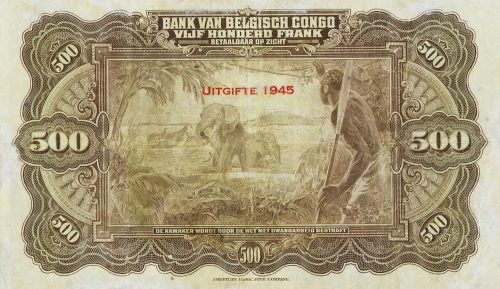
Although there are other elements in the background, elephants and a native hunter, they will not be visible. The important thing is to have a basic background on which one can build the composite. To make it appear to be more layers than it is, we immediately cut it in half along the line and, after offsetting it in depth, the pre-set lighting generated shadows, extending the space backwards. The elements were also immediately colored a bit because banknotes are rarely uniform in color.

To strengthen the forest effect, other objects can also be placed in the space, such as more trees. The 1965 Ghana 50 Cedis banknote has very well-separated two palm trees. There is a good selection of trees, but these trunks have something dynamic about them, which is why they were chosen.
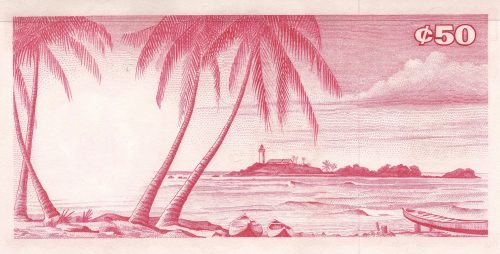
Cutting and inserting them in front of the background immediately does a lot to achieve the jungle effect. The elements are not cut out precisely on purpose, as this gives the film a papercut effect. There were originally plans to overlap each layer with very precise cutting, but the final result was not very elegant. As a result, the whole thing has a fold-out book-like effect and seems more playful than very serious.

One of the protagonists of the scene is the attacked caravan. Clearly, no banknote will be like this, so we must look for a dynamic horseback team, and the attack will be revealed in the context. The 2015 Libyan 10 dinar is also suitable:
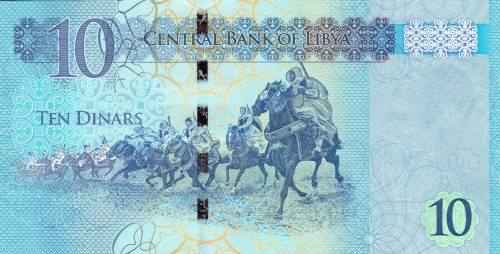
The characters enter the forest. Here, a question appears that has often been raised, that is, the images are full of all kinds of watermarks, patterns, signatures, numbers, etc. Here, for example, a metal wire runs through the riders. What should we do with this? Finally, we decided that these are part of the aesthetics, so we don’t mind them.

The attacking leopard is the most difficult. It’s not so much the elaboration that’s the problem, but the dynamic pose. Typically, banknotes depict everything in a fairly calm/neutral pose, so every drawing that shows something happening is a treasure. Fortunately, there is a middle ground, the first page of the Zaire 50 Makuta banknote used in 1980 has a leaping leopard. It’s not necessarily very nicely elaborated, and there is also a pattern on its body, but this doesn’t harm the mixed aesthetics of the film.
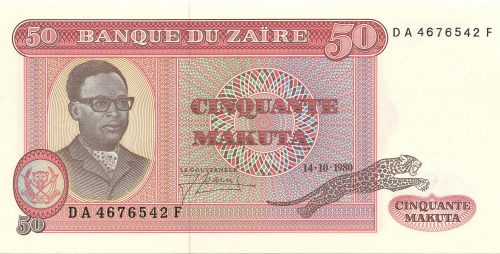
After the leopard is inserted, the scene starts to come to life.
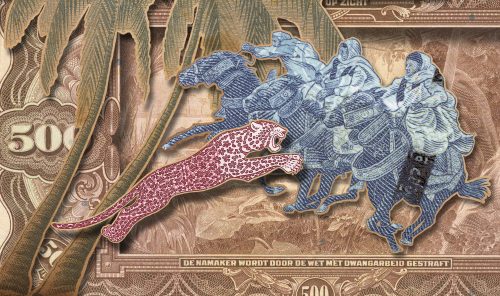
Every scene benefits from a little foreground, something beautiful but not distracting. On the 1984 Cameroon 10000 francs, there is an abstract pattern that could be a leaf, properly rotated.

Cut out and inserted into the composite, the scene provides a sufficiently finished look.

It is currently a matter of debate whether to insert textures into the scene or whether it offends the film’s “pure” language. For now, the texture-favoring approach is winning, so the last element inserted into the scene is a splashing blood texture – which colors the background, alluding to the violent events.
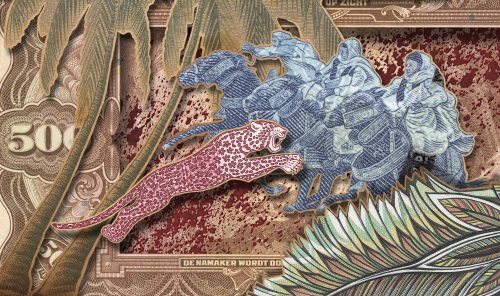
Visually, it creates quite a mixed, collage-like effect, so the whole image gets a final coloring, which tightens the contours and some lightening, which focuses attention on the essentials.
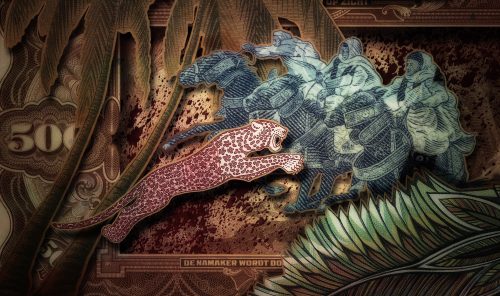
This is how a single frame of the film is created. When you consider that this image hasn’t even moved yet, and is just a single shot from a coherent story, it’s not hard to see why no one has ever made a banknote film before, and why it takes us years to finish it. However, we hope that when we finally finish it, it will provide a truly unique experience for every viewer!
If you are a banknote collector and can offer us scans, or are willing to let us scan them, you will find more information here: www.mimicry.hu/bankjeggyujtes

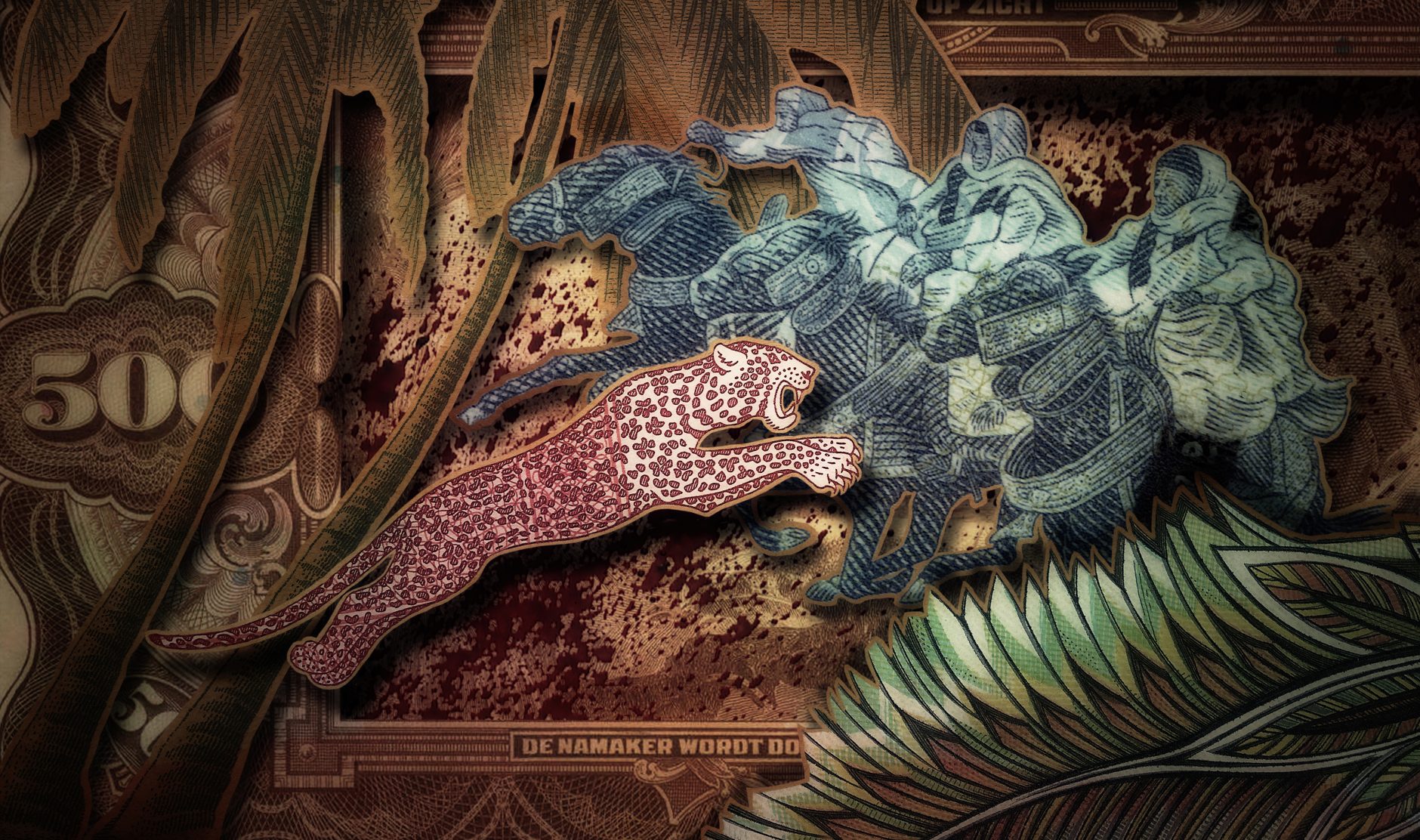
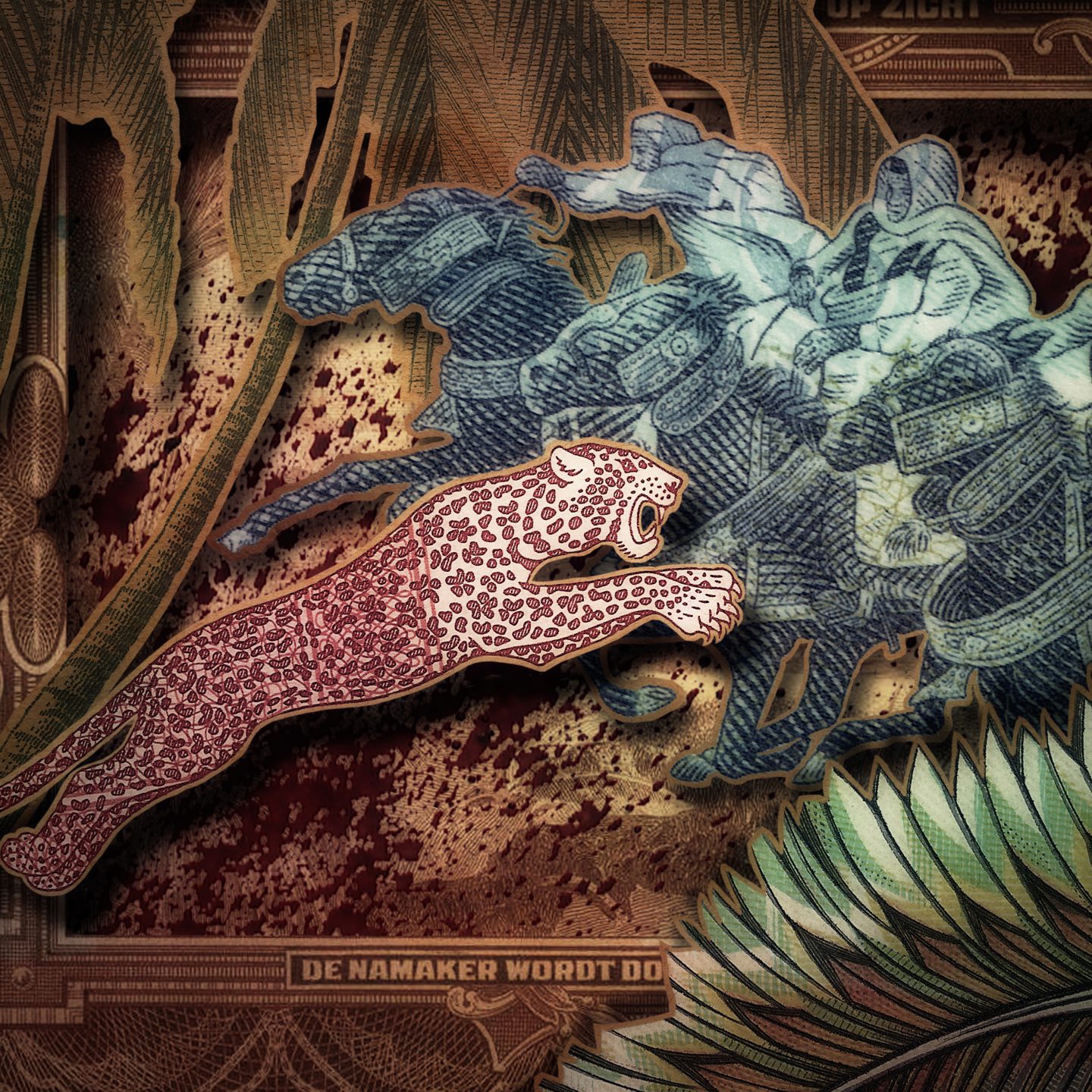
You must be logged in to post a comment.